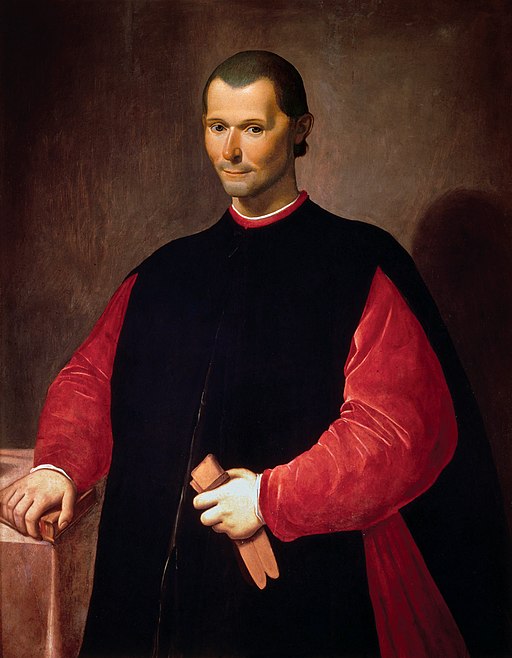Melander, E. (2009). The Geography of Fear: Regional Ethnic Diversity, the Security Dilemma and Ethnic War. European Journal of International Relations, 15(1), 95–124. https://doi.org/10.1177/1354066108100054
Melander (2009) presents a Machiavellian exploration of the use of fear in warfare. The author is a professor of peace and conflict research at Uppsala University. The work presented by the author includes multiple highly cited works on organized violence, gender inequality and intrastate conflict, low-intensity armed conflict, and problems of anarchy and the link to ethnic conflict. The prime areas of concern and writing for the researcher include peace research, causes of war, conflict resolution, and gender issues. The UCDP Georeferenced Event Dataset (Sundberg & Melander, 2013) is referenced in over 1000 papers.
Machiavelli (2009, p. 116) maintained that “to have the men fear and hope at one stroke” represents the goal of any leader. Yet, few would argue for the ethnic oppression that has been a feature of many failed states during the twentieth century. Melander (2009) explores the same topic by looking at regional ethnic diversity and the territorial concentrations of conflict. In this analysis, Melander (2009, p. 99) explores the perceived outcomes in a conflict where “first-strike advantages reduce the bargaining range so that either fear or temptation may shortcut efforts to manage a conflict peacefully.”
Consequently, “to enhance their own security,” Machiavellian leaders in areas of ethnic conflict may “provoke fear and countermeasures, with the result that less rather than more security is obtained in the end” (Melander, 2009, p. 99). The research in this paper documents the result of ethnic conflict and the use of fear as a tactic. In analyzing the Yugoslavian, Rwandan, Tamil, Georgian, and Slovakian conflicts, Melander demonstrates how grievances can build ongoing sources of later distrust. Moreover, “[w]hen the coexistence of different ethnic groups within the same state is common, ethnic war is rare” (Melander, 2009, p. 118). Consequently, ethnopolitical conflict represents the exception and not the rule.
Melander (2009) does not examine the reasons why ethnic groups mobilize into warfare, yet notes that it is conceivable that ethnic diversity reduces the likelihood of ethnic conflict arising. The underlying tone is compatible with the concept of a security dilemma and the logic behind political realism (Mearsheimer, 2014). The work also documents some of the concepts of a “dirty war” (Smith & Roberts, 2008) and the differences between ethnic groups that do and don’t engage in atrocities, with the costs of war incorporating long-term distrust and uncertainty in regions that embrace a falsely perceived advantage through fear.
“Rape is a weapon of war” (Kirby, 2013). In particular, this class of violence intimidates and leaves a lasting sense of fear. As Kressel (2008) demonstrates, groups that are uncertain of their ability to gain support through legitimate means can forego the gains of cooperation and react to perceived threats. Meander notes that where an existing situation has been highly valued, the various actors will be more likely to act cooperatively. Yet, this correspondingly leads to the condition associated with people who mistrust others and do not see cooperation as a satisfactory outcome.
Shames and Atchison (2019) note that fear and the forced consolidation of power present a strategy typically employed by dystopian governments. Here, unethical leaders can manipulate separatist grievances to have the people they use feel threatened by ethnically different groups. Melander (2009, p. 116) demonstrated that “there is considerable support for the notion that Ethnic War is particularly likely to engulf ethnic groups situated in a context of diversity.” Consequently, it is critically important to understand the explanations as to why people mobilize for ethnic war and to institute actions that aid vulnerable local communities in avoiding the cycle of fear, murder, and revenge that creates long-term instability.
References
Kirby, P. (2013). How is rape a weapon of war? Feminist International Relations, modes of critical explanation and the study of wartime sexual violence. European Journal of International Relations, 19(4), 797–821. https://doi.org/10.1177/1354066111427614
Kressel, N. (2008). Mass Hate: The Global Rise Of Genocide And Terror. Hachette UK.
Machiavelli, N. (2009). Art of War. University of Chicago Press.
Mearsheimer, J. J. (2014). The Tragedy of Great Power Politics (Updated edition). W. W. Norton & Company.
Melander, E. (2009). The Geography of Fear: Regional Ethnic Diversity, the Security Dilemma and Ethnic War. European Journal of International Relations, 15(1), 95–124. https://doi.org/10.1177/1354066108100054
Shames, S. L., & Atchison, A. L. (2019). 4. Strategies and Tactics of Dystopian Governments. In 4. Strategies and Tactics of Dystopian Governments (pp. 63–90). Columbia University Press. https://doi.org/10.7312/atch18890-007
Smith, M. L. R., & Roberts, S. (2008). War in the Gray: Exploring the Concept of Dirty War. Studies in Conflict & Terrorism, 31(5), 377–398. https://doi.org/10.1080/10576100801980492
Sundberg, R., & Melander, E. (2013). Introducing the UCDP Georeferenced Event Dataset. Journal of Peace Research, 50(4), 523–532. https://doi.org/10.1177/0022343313484347
(Image: Portrait of Niccolò Machiavelli, Santi di Tito, Public domain, Wikimedia Commons)

